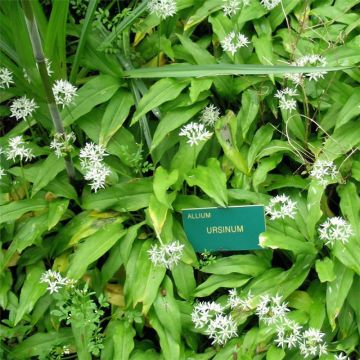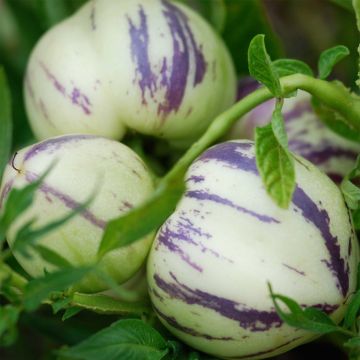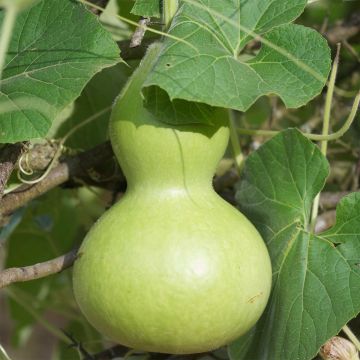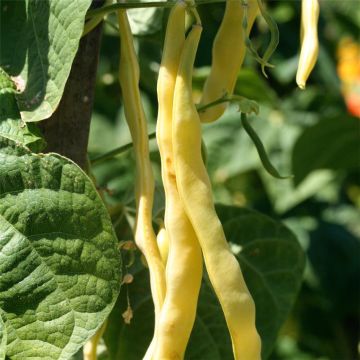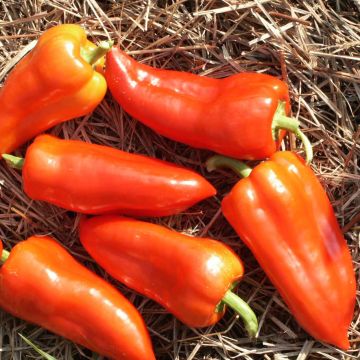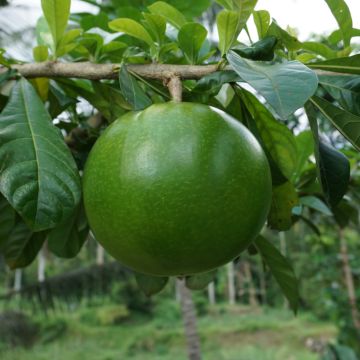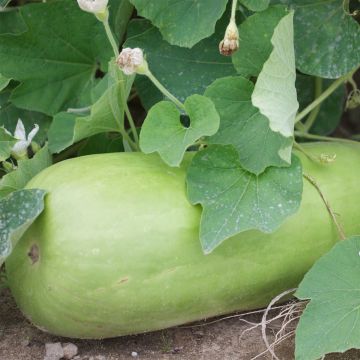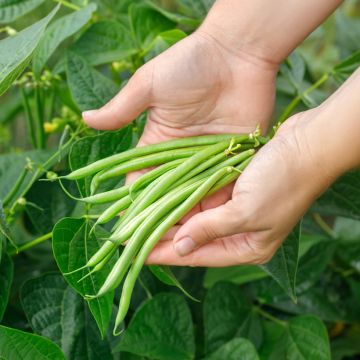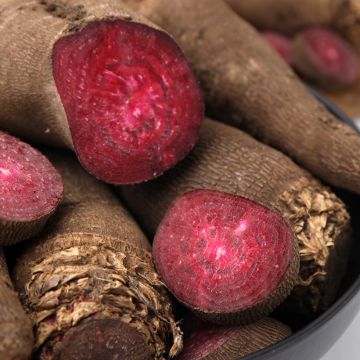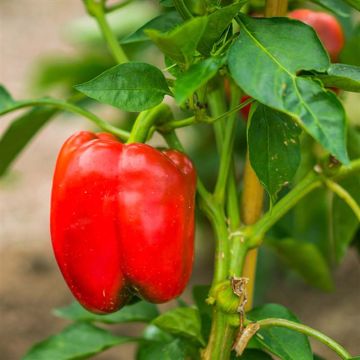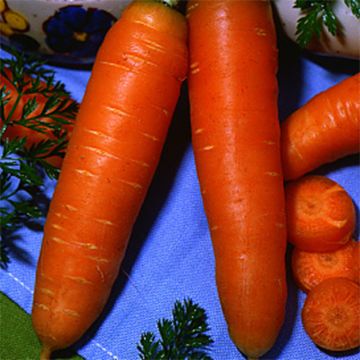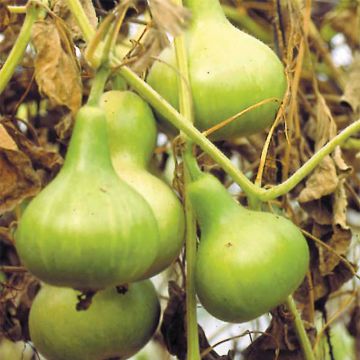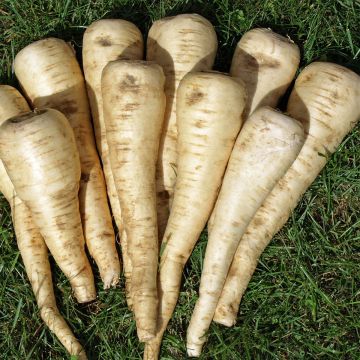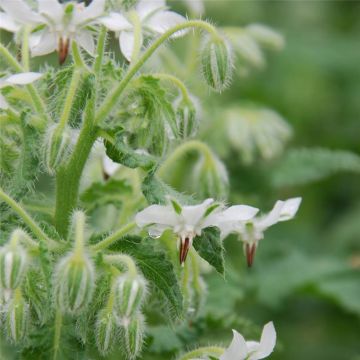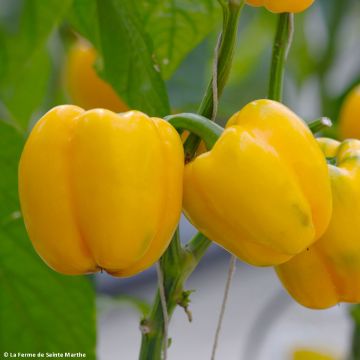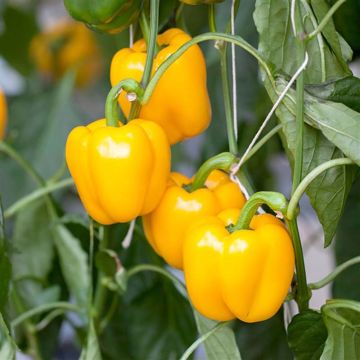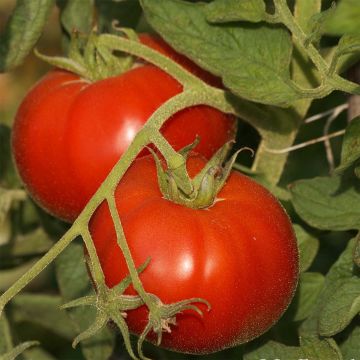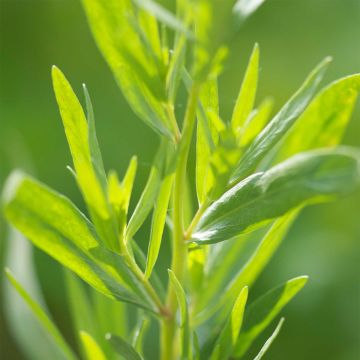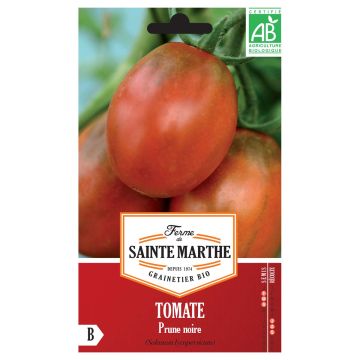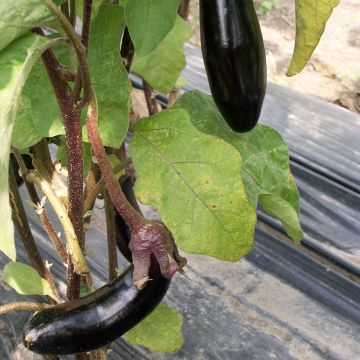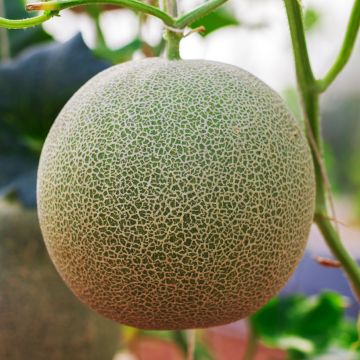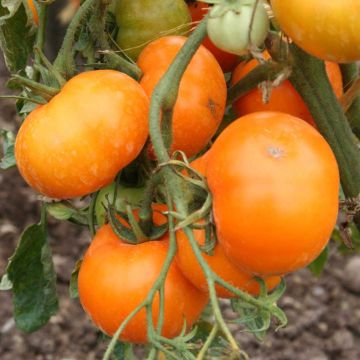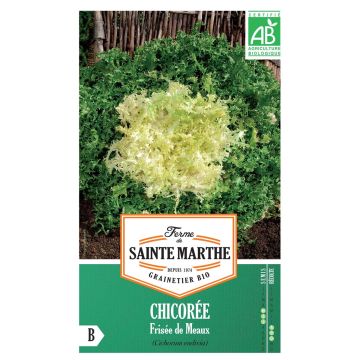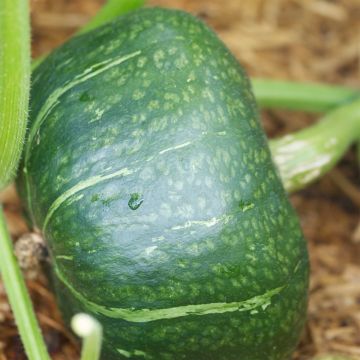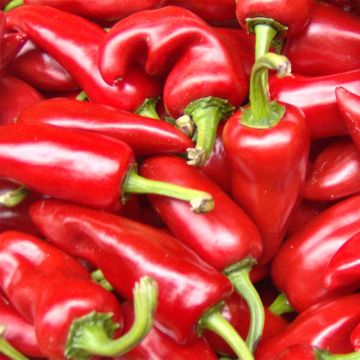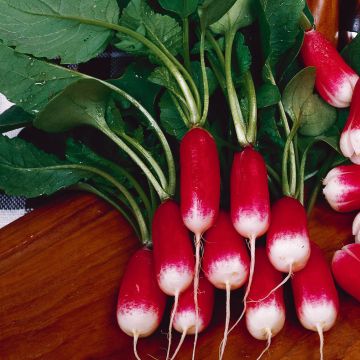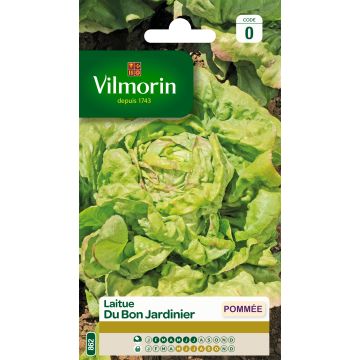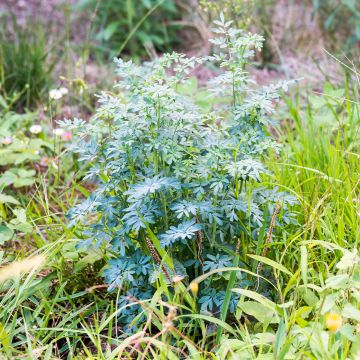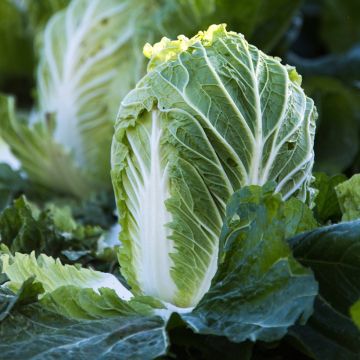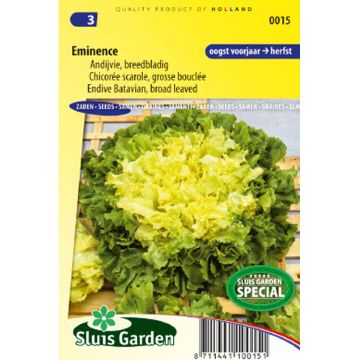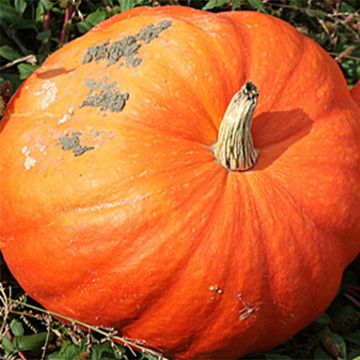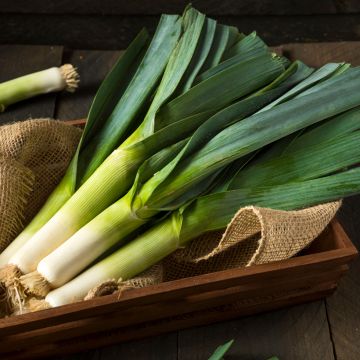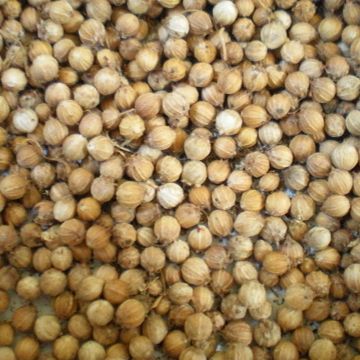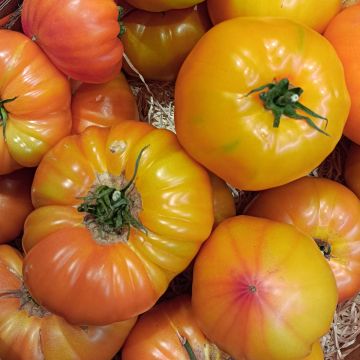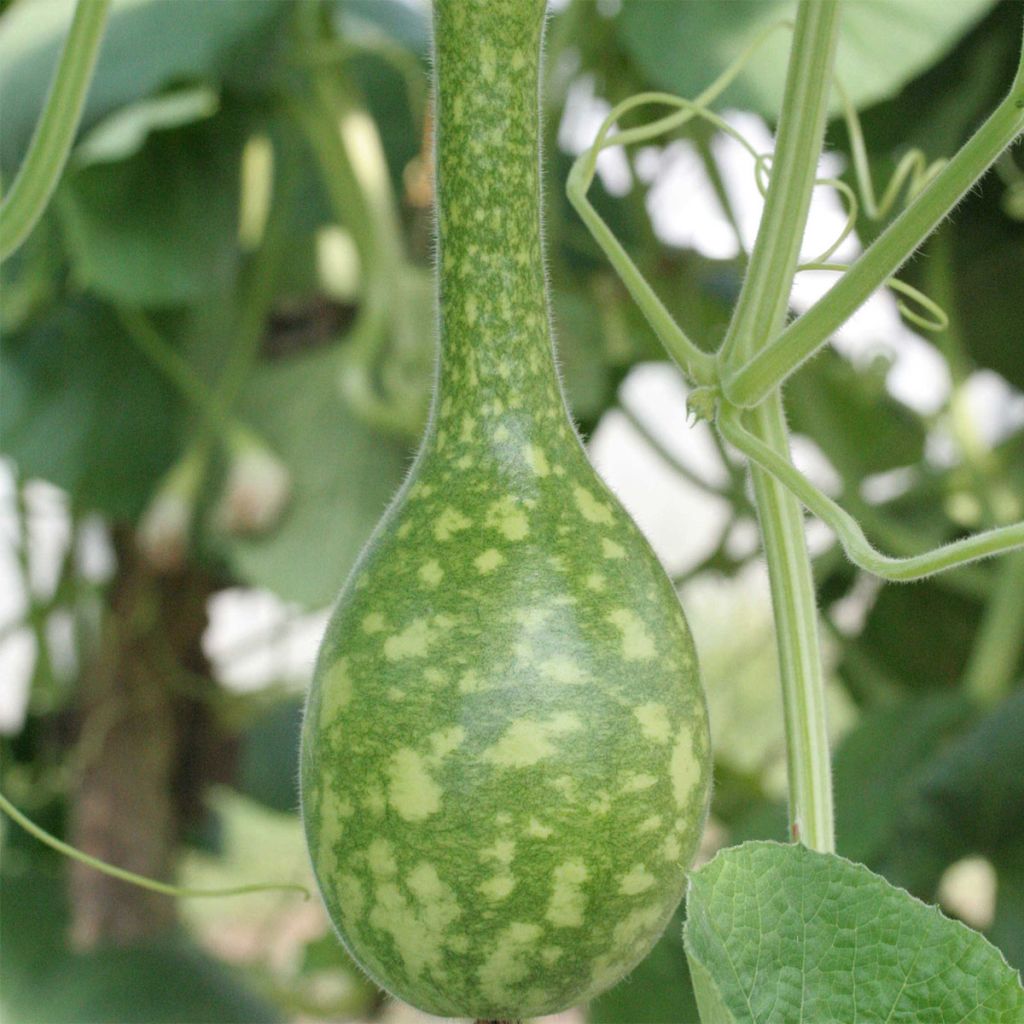

Courge Amphore Bio - Ferme de Sainte Marthe
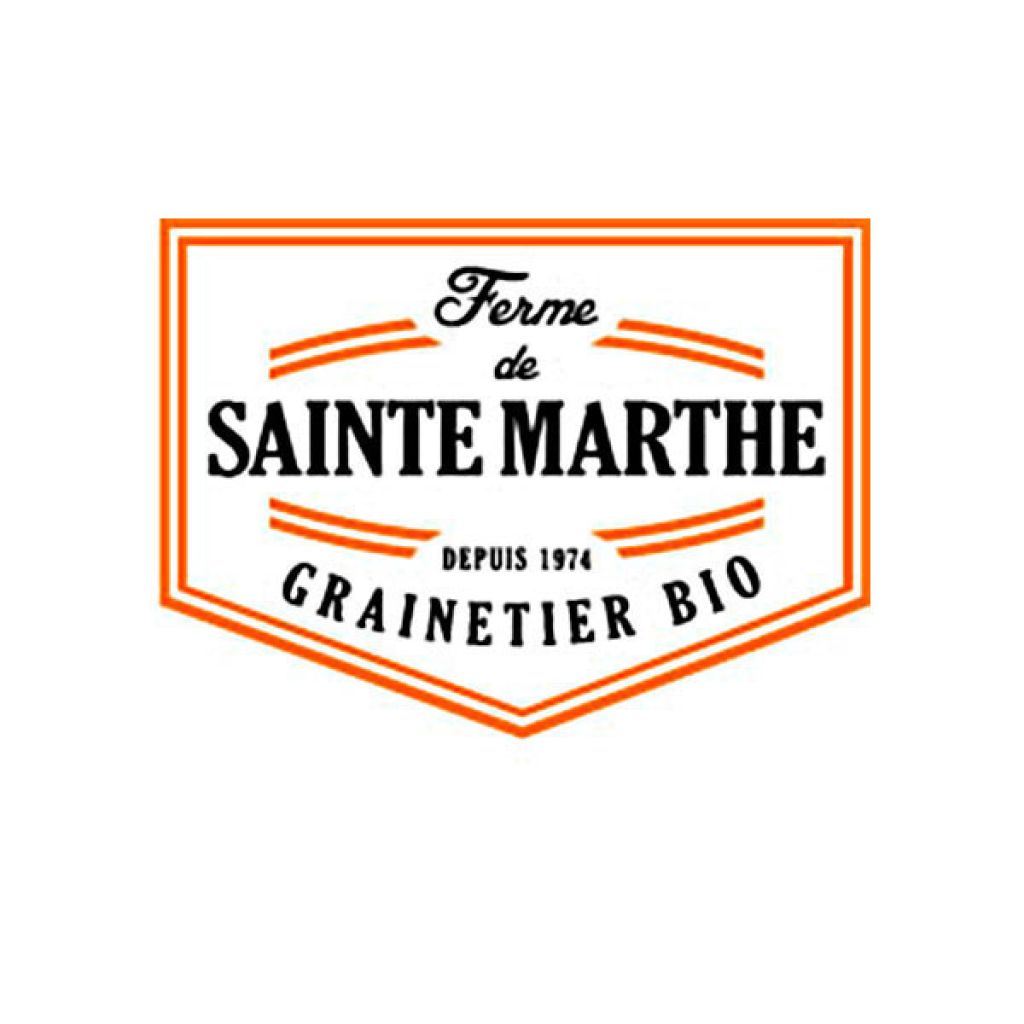

Courge Amphore Bio - Ferme de Sainte Marthe
Organic Amphore Calabash - Ferme de Sainte Marthe seeds
Lagenaria siceraria Amphore
Calabash cucumber, Calabash gourd, Common bottle gourd
Why not try an alternative variety in stock?
View all →This plant carries a 6 months recovery warranty
More information
We guarantee the quality of our plants for a full growing cycle, and will replace at our expense any plant that fails to recover under normal climatic and planting conditions.
Seed-only orders are dispatched by sealed envelope. The delivery charge for seed-only orders is €3.90.
Description
Lagenaria siceraria 'Amphore' is a non-edible variety intended solely for decorative use. It has a very rounded body measuring 10 to 30cm (4 to 12in) in diameter, topped with a graceful long neck that can reach 50cm (20in) to 1m (3ft). The gourd is dark green with light green mottling. It is a vigorous plant that can reach 10m (33ft) in height and will produce 2 to 5 fruits per plant. Sow your seeds in April or May to harvest from May to July.
The gourd is an herbaceous plant belonging to the Cucurbitaceae family. It is a distant cousin of squashes and pumpkins that we are familiar with. Often called a calabash or bottle gourd, it is cultivated both as a vegetable plant and as a utensil. Once dried, its fruit becomes a tool that can be used for a variety of purposes. Calabashes can be found in Asia, Africa, and the Americas. It is an annual plant that can either creep or climb with its tendrils. Its leaves are widely pubescent and produce a fairly distinctive odour. In spring, it bears large white flowers, which then develop into round fruits, or fruits with a neck resembling a bottle or an amphora. Some varieties can be consumed when very young, similar to courgette. However, some are toxic and therefore not edible. On the other hand, when harvested much later, all of them can become kitchen utensils, musical instruments like the Kora (an African harp) or the Berimbao accompanying Capoeira fighters in Brazil, and lanterns. This is only possible when the fruit has completely dried and the flesh has disappeared. This plant was used by Pliny the Elder as a container for liquids. It is also used to decorate trellises and pergolas.
Harvesting
Gourds are fruits that need a lot of sun to give their best, like any plant native to tropical regions. To make utensils, you will need to wait until the peduncle has completely dried. Harvesting should be done as late as possible.
Storage
Once completely dry, gourds can be stored indefinitely. They can be carved, painted, or perforated, etc. It's up to you to use your imagination to create the object that suits you. When dry, they become very fragile, so handle them with care.
Gardener's tip
Gourd fruits should be left on the plant for as long as possible, but bad weather can cause them to rot. In that case, you can dry them indoors by hanging them up. They are generally vigorous plants with highly decorative fruits and flowers. Provide them with a trellis for them to climb, sprawl, and let their fruits hang like lanterns. Gourds do not like humidity, so only give them the bare minimum in summer.
Report an error about the product description
Harvest
Plant habit
Foliage
Botanical data
Lagenaria
siceraria
Amphore
Cucurbitaceae
Calabash cucumber, Calabash gourd, Common bottle gourd
South Africa
Annual
Other Sainte Marthe farm
Planting and care
They need well-drained soil that is rich in organic matter. They also require plenty of sunlight but little water.
For early cultivation
In March or April, sow two or three seeds in small holes in trays or pots with soil that is rich in organic matter. Lightly cover the seeds and water them to maintain a slight level of humidity. The germination process is quite fast: after about ten days, you will see the first seedlings appear. Once they are strong enough, and the risk of frost has passed, transplant them into prepared open ground. Each plant requires a lot of space. If possible, space them 1m (3ft) apart. Dig holes that are 20 to 25cm (8 to 10in) in all directions and fill them two-thirds with compost. Then position the young plants and refill the holes with soil, firmly pressing down. Keep your seedlings at a temperature of 20°C (68°F) as they love warmth.
For seasonal cultivation
Once the risk of frost has passed, space out your holes in the ground. Sow two to three seeds in holes that are 2 to 3cm (1in) deep. Gently press down the soil and wait about ten days for the first shoots to appear.
These plants are very aesthetically pleasing on trellises or pergolas. As the fruits grow, support or train them along the structures.
Harvest in autumn, as late as possible. It is ready to harvest when the peduncle is completely dry and the fruit is ready to detach itself. Fully dried gourds change colour. However, if the autumn is humid, harvest and dry the fruits indoors.
Seedlings
Care
Intended location
-
, onOrder confirmed
Reply from on Promesse de fleurs
Vegetable seeds
Haven't found what you were looking for?
Hardiness is the lowest winter temperature a plant can endure without suffering serious damage or even dying. However, hardiness is affected by location (a sheltered area, such as a patio), protection (winter cover) and soil type (hardiness is improved by well-drained soil).

Photo Sharing Terms & Conditions
In order to encourage gardeners to interact and share their experiences, Promesse de fleurs offers various media enabling content to be uploaded onto its Site - in particular via the ‘Photo sharing’ module.
The User agrees to refrain from:
- Posting any content that is illegal, prejudicial, insulting, racist, inciteful to hatred, revisionist, contrary to public decency, that infringes on privacy or on the privacy rights of third parties, in particular the publicity rights of persons and goods, intellectual property rights, or the right to privacy.
- Submitting content on behalf of a third party;
- Impersonate the identity of a third party and/or publish any personal information about a third party;
In general, the User undertakes to refrain from any unethical behaviour.
All Content (in particular text, comments, files, images, photos, videos, creative works, etc.), which may be subject to property or intellectual property rights, image or other private rights, shall remain the property of the User, subject to the limited rights granted by the terms of the licence granted by Promesse de fleurs as stated below. Users are at liberty to publish or not to publish such Content on the Site, notably via the ‘Photo Sharing’ facility, and accept that this Content shall be made public and freely accessible, notably on the Internet.
Users further acknowledge, undertake to have ,and guarantee that they hold all necessary rights and permissions to publish such material on the Site, in particular with regard to the legislation in force pertaining to any privacy, property, intellectual property, image, or contractual rights, or rights of any other nature. By publishing such Content on the Site, Users acknowledge accepting full liability as publishers of the Content within the meaning of the law, and grant Promesse de fleurs, free of charge, an inclusive, worldwide licence for the said Content for the entire duration of its publication, including all reproduction, representation, up/downloading, displaying, performing, transmission, and storage rights.
Users also grant permission for their name to be linked to the Content and accept that this link may not always be made available.
By engaging in posting material, Users consent to their Content becoming automatically accessible on the Internet, in particular on other sites and/or blogs and/or web pages of the Promesse de fleurs site, including in particular social pages and the Promesse de fleurs catalogue.
Users may secure the removal of entrusted content free of charge by issuing a simple request via our contact form.
The flowering period indicated on our website applies to countries and regions located in USDA zone 8 (France, the United Kingdom, Ireland, the Netherlands, etc.)
It will vary according to where you live:
- In zones 9 to 10 (Italy, Spain, Greece, etc.), flowering will occur about 2 to 4 weeks earlier.
- In zones 6 to 7 (Germany, Poland, Slovenia, and lower mountainous regions), flowering will be delayed by 2 to 3 weeks.
- In zone 5 (Central Europe, Scandinavia), blooming will be delayed by 3 to 5 weeks.
In temperate climates, pruning of spring-flowering shrubs (forsythia, spireas, etc.) should be done just after flowering.
Pruning of summer-flowering shrubs (Indian Lilac, Perovskia, etc.) can be done in winter or spring.
In cold regions as well as with frost-sensitive plants, avoid pruning too early when severe frosts may still occur.
The planting period indicated on our website applies to countries and regions located in USDA zone 8 (France, United Kingdom, Ireland, Netherlands).
It will vary according to where you live:
- In Mediterranean zones (Marseille, Madrid, Milan, etc.), autumn and winter are the best planting periods.
- In continental zones (Strasbourg, Munich, Vienna, etc.), delay planting by 2 to 3 weeks in spring and bring it forward by 2 to 4 weeks in autumn.
- In mountainous regions (the Alps, Pyrenees, Carpathians, etc.), it is best to plant in late spring (May-June) or late summer (August-September).
The harvesting period indicated on our website applies to countries and regions in USDA zone 8 (France, England, Ireland, the Netherlands).
In colder areas (Scandinavia, Poland, Austria...) fruit and vegetable harvests are likely to be delayed by 3-4 weeks.
In warmer areas (Italy, Spain, Greece, etc.), harvesting will probably take place earlier, depending on weather conditions.
The sowing periods indicated on our website apply to countries and regions within USDA Zone 8 (France, UK, Ireland, Netherlands).
In colder areas (Scandinavia, Poland, Austria...), delay any outdoor sowing by 3-4 weeks, or sow under glass.
In warmer climes (Italy, Spain, Greece, etc.), bring outdoor sowing forward by a few weeks.

































